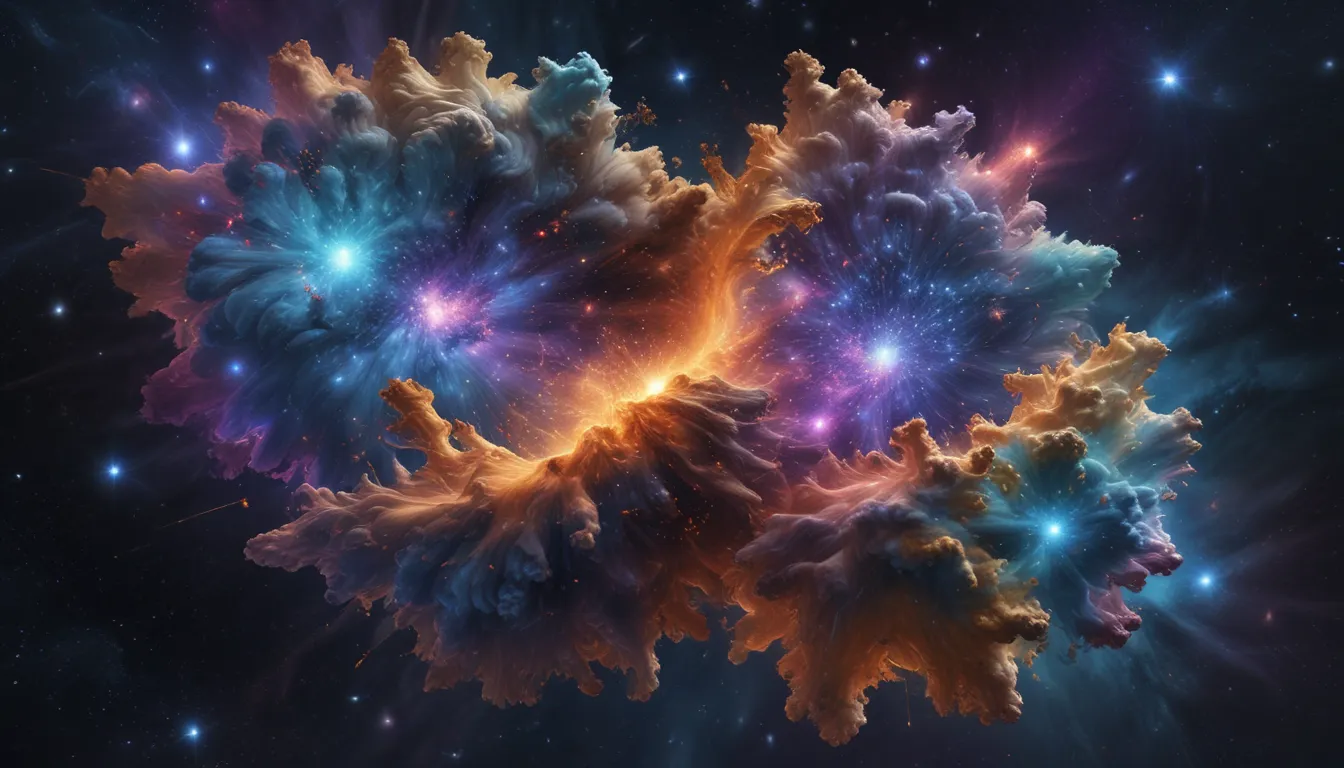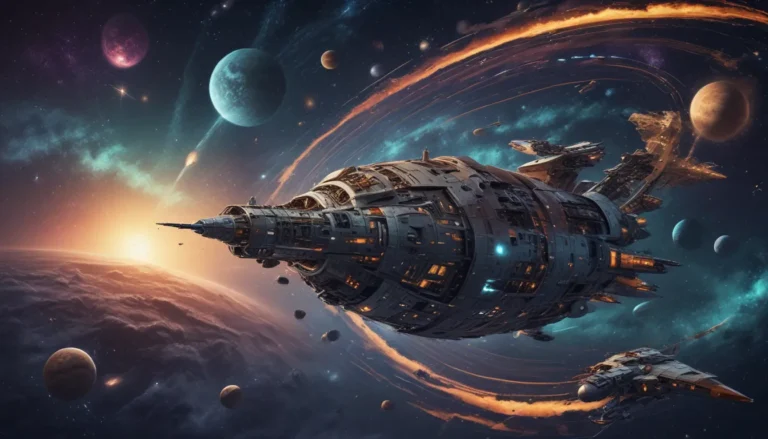The pictures we use in our articles might not show exactly what the words say. We choose these pictures to make you interested in reading more. The pictures work together with the words but don’t take their place. The words still tell you the important facts.
In the vast expanse of the universe, galaxy clusters stand out as some of the most awe-inspiring and enigmatic structures. These colossal conglomerations of galaxies, held together by the force of gravity, offer a glimpse into the cosmic tapestry of galaxies and dark matter. From their immense size to their pivotal role in shaping the evolution of the universe, galaxy clusters continue to captivate the minds of scientists and space enthusiasts alike.
Unveiling the Marvels of Galaxy Clusters
Galaxy clusters are massive groups of galaxies, ranging from small clusters to colossal collections containing thousands of galaxies. These clusters, held together by gravity, can span hundreds of thousands of light-years, making them some of the largest known structures in the universe. Within these cosmic giants reside supermassive black holes, powerful shockwaves, and mysterious dark matter, all playing a crucial role in the intricate dance of cosmic evolution.
The Intriguing Realms of Galaxy Clusters
-
The Milky Way is part of a galaxy cluster: Our very own Milky Way belongs to a larger structure known as the Local Group, which is a part of the vast Virgo Supercluster. This interconnected web of galaxies highlights the scale and complexity of the cosmic landscape.
-
The Great Attractor's mysterious pull: The Great Attractor, located in the constellation Centaurus, is a gravitational anomaly that exerts a mysterious force, drawing galaxies towards it. Scientists continue to unravel the enigmatic nature of this cosmic phenomenon.
-
Scorching temperatures within galaxy clusters: These cosmic behemoths contain hot gas that can reach temperatures of millions of degrees Celsius. The emission of X-rays from this intracluster gas provides valuable insights into the dynamics of galaxy clusters.
-
The dominance of dark matter: Dark matter, a mysterious substance that does not interact with light, plays a significant role in the composition of galaxy clusters. It exerts its gravitational influence, shaping the structure and evolution of these cosmic entities.
-
The gravitational lensing effect: Galaxy clusters can act as gravitational lenses, bending and magnifying light from distant objects. This phenomenon allows scientists to observe and study celestial bodies that would otherwise be beyond our reach.
-
Evolving cosmic landscapes: Over billions of years, galaxy clusters undergo dynamic processes such as mergers, contributing to their evolution and shaping their intricate structures. These interactions provide valuable insights into the formation of galaxies.
-
The presence of supermassive black holes: Within the heart of many galaxy clusters lie supermassive black holes, emitting powerful jets of energy and influencing their surrounding environment. These cosmic powerhouses add to the complexity of galaxy clusters.
Delving Deeper into Galaxy Clusters
-
Unveiling magnetic fields within clusters: Scientists have discovered strong magnetic fields permeating galaxy clusters, intertwining with hot gases and galaxies. These magnetic fields play a crucial role in shaping various processes within the cluster.
-
The role of central galaxies: In certain galaxy clusters, a dominant central galaxy exerts influence over the surrounding galaxies, impacting their dynamics and evolution. These central galaxies serve as focal points within the cosmic tapestry of clusters.
-
Insights into cosmic evolution: Studying galaxy clusters offers valuable clues about the formation and evolution of galaxies, providing a unique perspective on the history of the universe. By unraveling the mysteries of galaxy clusters, scientists gain a deeper understanding of cosmic processes.
-
Diverse shapes and structures: Galaxy clusters come in various shapes, from spherical clusters to elongated formations, each influenced by gravitational forces and cosmic interactions. These diverse structures add to the beauty and complexity of the cosmos.
-
Gravitational tug-of-war: Some galaxy clusters exhibit a gravitational tug-of-war between galaxies and hot gases, showcasing the intricate interplay of forces within these cosmic entities. This dance of gravity highlights the complex dynamics of galaxy clusters.
-
The mystery of excess dark matter: Certain galaxy clusters display an unexpected abundance of dark matter compared to visible matter, challenging our understanding of the distribution of matter in the universe. This discrepancy adds a layer of mystery to the composition of galaxy clusters.
-
A window into galaxy evolution: Galaxy clusters serve as excellent laboratories for studying the evolution of galaxies, offering insights into how galaxies form, evolve, and interact with their cosmic environment. These clusters provide a rich field for exploring the fascinating process of galaxy evolution.
-
Space-based exploration of galaxy clusters: Space telescopes such as the Hubble Space Telescope and the Chandra X-ray Observatory have provided invaluable data and stunning images of galaxy clusters. These observations deepen our understanding of these colossal cosmic structures.
-
Key to unlocking cosmic secrets: Understanding galaxy clusters is paramount to unraveling the mysteries of the universe. By exploring these massive structures, scientists gain profound insights into the origins, structure, and ongoing evolution of the cosmos.
Embarking on a Cosmic Journey
In the realm of galaxy clusters, countless marvels await exploration. These cosmic giants not only showcase the grandeur of the universe but also offer valuable insights into its intricate workings. As we continue to delve into the depths of space, galaxy clusters will remain beacons of wonder, guiding us on a journey of discovery and enlightenment.
Conclusion: Embracing the Marvels of Galaxy Clusters
The exploration of galaxy clusters has unveiled a wealth of astonishing facts that shed light on the immense grandeur and complexities of the universe. From the interactions of galaxies within clusters to the mysterious nature of dark matter, each discovery deepens our understanding of the cosmic tapestry. Galaxy clusters stand as testaments to the magnificence of the universe, inviting us to contemplate the wonders of cosmic evolution.
FAQs: Exploring the Universe Beyond
-
What is a galaxy cluster? A galaxy cluster is a vast structure in the universe comprising numerous galaxies bound together by gravity.
-
How many galaxies can be found in a galaxy cluster? A single galaxy cluster can house hundreds to thousands of galaxies, with variations in size and composition.
-
What causes the formation of galaxy clusters? Galaxy clusters form through gravitational interactions and the accumulation of matter, including dark matter, gas, and galaxies.
-
How does gravitational lensing occur in galaxy clusters? Gravitational lensing arises when the gravitational pull of massive galaxies or clusters distorts the path of light from background objects.
-
Are there collisions between galaxy clusters? Yes, observations have documented collisions between galaxy clusters, leading to spectacular cosmic interactions.
-
How do galaxy clusters contribute to our understanding of dark matter? Galaxy clusters provide insights into the distribution and properties of dark matter, shaping our understanding of this mysterious substance.
-
Can galaxy clusters serve as indicators of the universe's age? The study of galaxy clusters, along with other cosmological tools, offers insights into the age and evolution of the universe, providing crucial information about cosmic history.
Exploring the Cosmic Frontier
As we gaze into the depths of space and unravel the mysteries of galaxy clusters, we embark on a journey of discovery and enlightenment. These cosmic wonders stand as beacons of awe, inviting us to explore the grandeur of the universe and unlock its hidden secrets. May the marvels of galaxy clusters inspire us to delve deeper into the realms of space, where endless wonders await our discovery.






